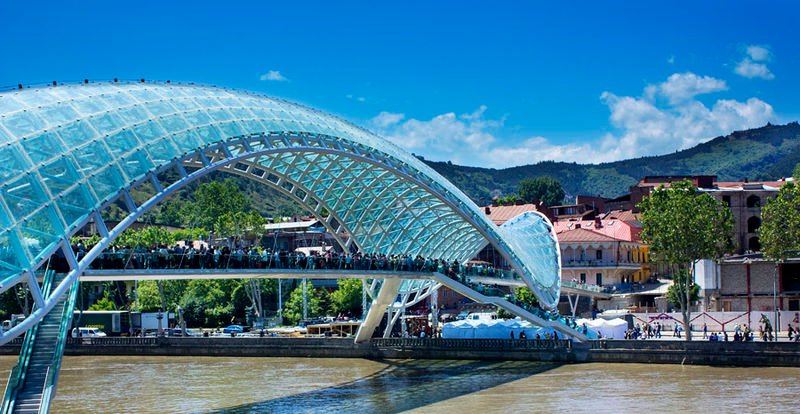 Bridge of Peace
Bridge of PeaceSource: http://commons.wikimedia.org/wiki/File:%E1%83%9B%E1%83%A8%E1%83%95%E1%83%98%E1%83%93%E1%83%9D%E1%83%91%E1%83%98%E1%83%A1_
%E1%83%AE%E1%83%98%E1%83%93%E1%83%98.jpg
Author: Levan Gokadze

%E1%83%AE%E1%83%98%E1%83%93%E1%83%98.jpg
Author: Levan Gokadze

Tbilisi (Georgian: თბილისი) is the capital and biggest city in Georgia. Straddling the banks of the Mtkvari River, it covers 726 sq km (280.3 sq mi) in central-eastern Georgia, and has a population of 1.2 million people (2011 estimate), within a metropolitan area of 1.5 million inhabitants. The city is the industrial, social and cultural heart of Georgia.
Tbilisi experiences a moderately humid subtropical climate influenced by wind from Siberia as well as the Black Sea. Warmest month is July, when the average high temperature rises to 31°C (87.8°F). Coldest month is January, when the average low temperature drops to -1.5°C (29.3°F). Tbilisi receives the most rain in May and June, each getting some 84 mm (3.31 in) of rainfall.
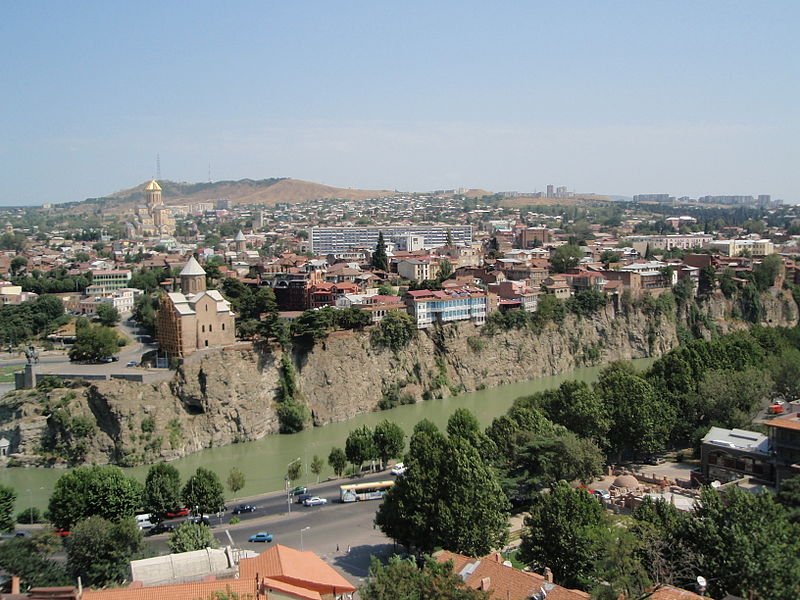 Tbilisi, Georgia
Tbilisi, GeorgiaSource: http://commons.wikimedia.org/wiki/File:Mtkvari_Cliff_Tbilisi.jpg
Author: Ephraim Stillberg

Author: Ephraim Stillberg

Until 1936, Tbilisi was written as Tiflis. It was founded in the 5th century by KIng Vakhtang Gorgasali. His successor, King Dachi I Ujarmeli, relocated the capital from Mtskheta to here, to improve its defence. At that time, it was only the capital of the Kingdom of Iberia, or Eastern Georgia. It only became the capital of a united Georgia in AD 1122, when it absorbed the Kingdom of Kutaisi, or Western Georgia.
The location of Tbilisi at the crossroad of medieval trade routes, including the Silk Road, makes it an important trading town. However that also puts it in a vulnerable spot against rival powers. Over the centuries, it was conquered by the Byzantine, the Ottomans, Persia and Russia, among others. Each of the foreign power exerted a lasting impact on the cultural appearance of Tbilisi.
In 1236, Tbilisi fell to Mongol invasion. Although it did not lose its statehood, it fell under Mongol influence that lasted close to a hundred years. Georgia was only able to oust the Mongols in the 1320s. However some decades later, in 1366, it was struck by the plague.
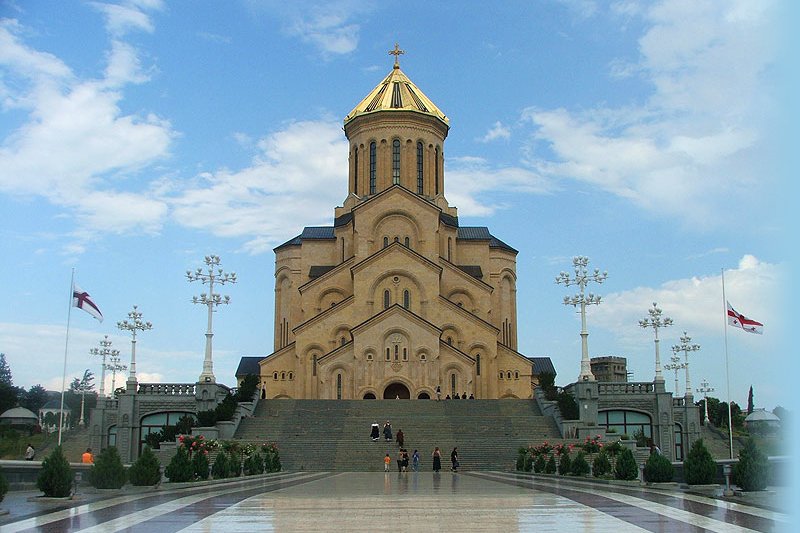 Sameba Cathedral, Tbilisi
Sameba Cathedral, TbilisiSource: http://commons.wikimedia.org/wiki/File:Orthodoxxyportalbanner.jpg
Author: Melberg, George Mel

Author: Melberg, George Mel

Tbilisi was under foreign rule from the late 14th centuryn until the end of the 18th century. In 1801 it joined the Russian Empire. During Russian rule, Tbilisi grew economically and politically as European-style buildings were erected in the city. A number of emminent Russians visited it, including Alexander Pushkin, Leo Tolstoy and the ruling Romanov family.
The Russian Revolution of 1917 brought an end to the Russian Empire. In its wake, Tbilisi served as the capital of the Transcaucasian Federation, which is the precursor of modern-day Georgia, Armenia and Azerbaijan, created between on 26-28 May, 1918. Bolshevik forces entered Georgia in 1921, subjecting it to Communist-style rule. Tbilisi was made the capital of the Transcausasian Socialist Federative Soviet Republic, and later the Georgian Soviet Socialist Republic. Under Soviet rule, the city continued to grow and industrialize. Any form of protest against Stalin rule was brutally suppressed, as in the March 9 Massacre of 1956.
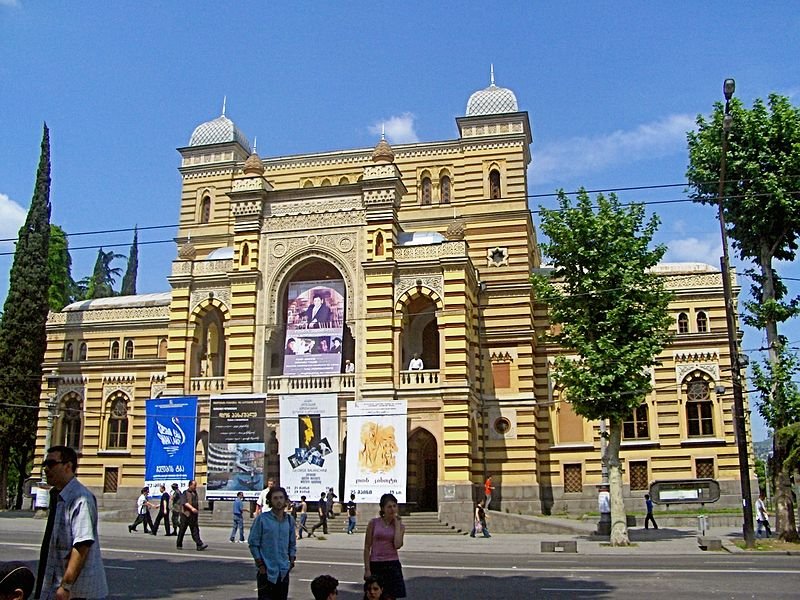 Tbilisi Opera House
Tbilisi Opera HouseSource: http://commons.wikimedia.org/wiki/File:Opera_House.jpg
Author: Imposter

Author: Imposter

The collapse of the Soviet Union plunged Tbilisi (and Georgia by extension) into a long period of political instability. The final decade of the 20th century was marked by massive unemployment, poverty and the proliferation of clandestine enterprises. The city has inched towards recovery, particularly since 2003, although the South Ossetia War of 2008 brought Russian air attacks to the city. Since then, the city is rapidly embarking on improvement to its transport infrastructure, with the building of tram lines, railway lines and the relocation of its main train station.
Visiting Tbilisi
The Tbilisi International Airport, located 17 km to the southeast of downtown Tbilisi, has a new, modern terminal opened in 2007. A modern highway, the George W Bush Avenue, connects it to downtown. The airport receives flights from Almaty, Amsterdam, Antalya, Astana, Athens, Batumi, Baku, Donetsk, Dubai, Frankfurt, Kharkiv, Kiev, London-Heathrow, Minsk, Moscow, Munich, Odessa, Paris Charles de Gaulle, Prague, Riga, Sochi, Teheran, Tel Aviv, Urumqi, Vienna, Yekaterinburg and Yerevan, among others.Arriving at the airport, you can take bus 37 to downtown Tbilisi. There's one every 15-30 minutes for the 50-minute journey to town. Bus fare is 0.50 lari while taxi fare for the same journey is between 20 to 25 lari.
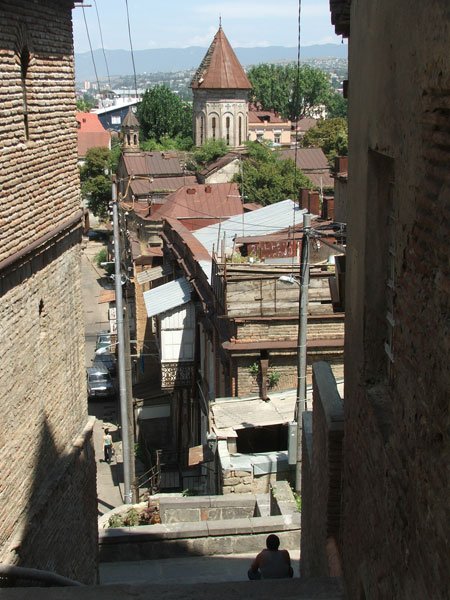 St George of Mughni Armenian Church, Tbilisi
St George of Mughni Armenian Church, TbilisiSource: http://commons.wikimedia.org/wiki/File:%E1%83%97%E1%83%91%E1%83%98%E1%83%9A%E1%83%98%E1%83%A1%E1%83%98_Tbilisi_going_up_to_Kartlis_Deda.jpg
Author: Monika

Author: Monika

Places of Interest in Tbilisi
- G. Chitaia Ethnographical Open-Air Museum
Museum showcasing some 70 houses and buildings representing the architecture from various parts of Georgia. - Janashia Museum
Museum displaying thousands of Georgian and Caucasian artifacts from the Bronze Age to the early 20th century. - Numismatic Museum
Museum displaying antique coins from various periods of Georgian history. - Old Tbilisi
The old town of Tbilisi with its traditional architecture, winding streets and ancient churches. - Parliament Building of Georgia
The building for the supreme legislature of Georgia. - Sameba Cathedral
Also called the Holy Trinity Cathedral Church, this is the largest church in Georgia, built in 2002. - Tbilisi Museum of Art
Museum celebrating the art work of local Georgian artists.
 Latest updates on Penang Travel Tips
Latest updates on Penang Travel Tips
 Map of Roads in Penang
Map of Roads in Penang
Looking for information on Penang? Use this Map of Roads in Penang to zoom in on information about Penang, brought to you road by road.
Copyright © 2003-2025 Timothy Tye. All Rights Reserved.

 Go Back
Go Back